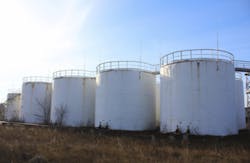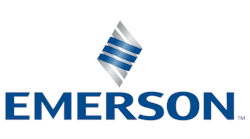Ultrasonic level sensors are incredibly versatile instruments. They can be very accurate, even from a long distance; they can be used with a wide range of chemicals, since they don’t need to be in contact with the substance being measured; they can be used to measure liquids or solids; software allows them to be configured easily. There is one thing, however, that ultrasonic level sensor can’t do, no matter how they are configured … they can’t be used as leak or liquid presence detectors. Depressing, isn’t it?
But wait. Ultrasonic sensors are so versatile, and configurable, and sensitive, right? Surely we can use all these features to our advantage and get an ultrasonic sensor to tell us if we have a spill.
The fact is ultrasonic level sensors rely on depth to take a measurement. They do not detect moisture or the presence of liquid; they detect a change in distance. That means a leak would have to puddle up before an ultrasonic could possibly detect it—a proposition that many are uncomfortable with.
An Experiment
Just to settle any doubt, let’s give it a shot. Maybe we can leverage the functionality of an ultrasonic sensor for liquid presence detection.
Let’s say, for example, we take an ultrasonic sensor with an operating range of 1 to 25 feet, an accuracy of +/-0.25 percent of detected range, and a resolution of 0.1”. For optimum performance, we’ll put our sensor 10 feet above the floor we want to monitor for spills, and set the detecting window to +/-0.5 feet.
The accuracy of the sensor readings (the aforementioned +/-0.25 percent of detected range, or the distance from the sensor to the current reading) will be 10 feet * 0.0025 = 0.025 feet, or 0.3 inches (between ¼” and 5/16”). That means any given reading will be within +/-5/16” of the actual level. So, theoretically, 5/16” of liquid could accumulate before the sensor registers a change. Do you really want to wait for that much of a puddle to form before you are alerted to a spill?
But, you might say, if the distance between the sensor and the floor is the primary factor in determining the percentage error, why not cut it in half? If a sensor mounted at 10 feet has an accuracy of +/-0.3”, then wouldn’t moving the sensor down to 5’ reduce the error to +/-0.15”, or less than +/-3/16”? Well, yes, sort of. You wouldn’t be wrong, but you would be forgetting how ultrasonic sensors work.
READ ALSO: Q&A – Technology Trends & Best Practices for Modern Level Measurement
Fine Tuning
The ultrasonic pulses sent out by the sensor expand in concentric circles, indiscriminately bouncing back to the sensor off any surface they encounter. When used inside a tank, the primary surface encountered by the pulses of an ultrasonic sensor is the target liquid. A sensor can be carefully positioned within a tank and calibrated so as to avoid or ignore potential interferences, such as the sides or bracings of the tank or inlet flows.
But when you try to put your sensor outside the tank so it can find spills for you, you lose all the advantages of the controlled environment inside the tank. You have to mount it far enough away from the tank so the wall of the tank doesn’t reflect any of the ultrasonic pulses. And you need to constrain the strength of the pulses and sensitivity of the sensor to reduce other environmental false positives, which will effectively restrict the area over which the sensor will be looking for a spill.
So, after all that, you are left with an ultrasonic sensor exposed at a vulnerable elevation, extended away from the tank, looking for a sizable amount of liquid in a very specific area. That’s a whole lot of work, and risk, to try to get an ultrasonic sensor to find a spill for you.
Why ask your ultrasonic sensor to do something it’s not meant to do, when there are plenty of sensors designed and built specifically for leak detection? Let your ultrasonic sensor tell you how much liquid is in a tank, and let a leak detecting sensor look for the leaks.
This blog post originally appeared on Automation Products Group’s (APG), The Level Measurement Expert Blog. APG is an ISO 9001-certified company that specializes in liquid level sensor and pressure transducer design and manufacture.


